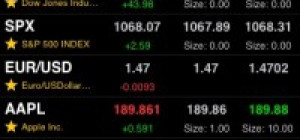 The term high-frequency trading refers to a program that makes use of powerful computers to transact a large number of orders at a very fast speed. It uses complex algorithms to execute orders and analyze multiple markets based on market conditions. High-frequency trading is also referred to as low-latency trading. Since the publication of Michael Lewis book “Flash boys”, the consequences of high-frequency trading has been in the limelight and has created two contrasting opinions. On one hand, some investors think that high-frequency trading causes market volatility, has unfair advantages, and can cause future flash clashes. On the other hand, some people are appreciating the positive role of high-frequency trading in investment. There is a consensus that high-frequency trading is gaining much popularity in the American equity-market trades. Despite the controversy, studies show that there are quite a number of advantages derived from high-frequency trading.
The term high-frequency trading refers to a program that makes use of powerful computers to transact a large number of orders at a very fast speed. It uses complex algorithms to execute orders and analyze multiple markets based on market conditions. High-frequency trading is also referred to as low-latency trading. Since the publication of Michael Lewis book “Flash boys”, the consequences of high-frequency trading has been in the limelight and has created two contrasting opinions. On one hand, some investors think that high-frequency trading causes market volatility, has unfair advantages, and can cause future flash clashes. On the other hand, some people are appreciating the positive role of high-frequency trading in investment. There is a consensus that high-frequency trading is gaining much popularity in the American equity-market trades. Despite the controversy, studies show that there are quite a number of advantages derived from high-frequency trading.
Advantages of High Frequency Trading
To start with, high-frequency trading offers direct access to the market. In other words, one does not have to go through a broker to execute their trading transactions. Consequently, one can peruse through the stock prices and make an independent decision. Second, high-frequency trading offers speed advantage over the other investors. This is achieved through placing the servers right next to the exchanges’ servers, using advanced technology, using sophisticated equipment, and programming a computer to respond to pre-set instructions. Third, high-frequency trading has a comprehensive understanding of the market micro-structure. These include information about how orders are executed and how they are prioritized. Fourth, it is an efficient tool in taming price fluctuations. This is because investors buy when the price is below trend and eventually buy when the price is above trend. Fifth, there are tremendous weakness in the stock market that high-frequency traders can exploit. For example, large orders do not work well with thinly traded securities. That allow others to profit from such weaknesses. Lastly, individual investors benefit from liquidity. In this regard, the more the resources in the market, the better the opportunities and profits for the individual investors. The use of technology in high-frequency trading reduces transaction fees and also leads to an improvement of exchanges over the long term.
The Wall Street Trading Room
The Wall Street Trading Room developed an aglo-trading system by the name pandela that allows individual investors to reap optimal benefits of high-frequency trading. Pandela has proven useful in anticipation and execution of stocks by sharing efficient stock trading strategies through mentorship programs and video tutorials. The system offers the fastest possible speeds and it is absolutely free. Pandela aglo-trading software can be accessed at this page.
Conclusion
The debate about the purpose and value of high-frequency trading continues to range on. More research is being done on the same issue. Despite that, there is enough evidence that high-frequency trading is beneficial to investors. In fact, some have pointed out that Michael Lewis is entirely wrong on his criticism of high-frequency trading. Financial analysts and stock experts are advising investors not to underestimate the significance of high-frequency trading. Overall, high-frequency trading improves the efficiency of stock markets, reduces costs, and makes market liquidity more efficient.







